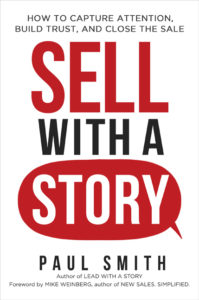Contrary to conventional wisdom, it is possible to have intellectual, adult conversations on Facebook. In fact, I think it’s imperative that we do. Because while social media has reunited old friendships and provides a seemingly limitless variety of amusement, it’s also been used to spread conspiracy theories and fake news like wildfire through partisan echo chambers on both ends of the political spectrum.
It’s also imperative that we do because that’s where people are these days. The old venues for important conversations are gone. People don’t discuss politics over dinner anymore because they don’t sit down and have dinner together anymore.
And Facebook is what we make of it. If you only use it to post silly cat memes and pictures of your dinner, then that’s what it is. If you use it to have meaningful conversations about important topics, then that’s what it is. It’s time to raise the intellectual bar of conversation on Facebook. Here’s how:
1) Lead by example – Use social media to discuss serious topics more often: politics, religion, philosophy, science, history, etc. It doesn’t have to be all the time. But set a goal to make at least one out of every three posts be about something serious and important to our democracy. And in those instances, try to adhere to the remaining guidelines:
2) Take the time to express yourself thoroughly, like you were writing a short essay for a grade. (Because real life is every bit as important as grades.) That means providing thoughtful, thorough responses, like you were writing a letter in 1982 with your whole brain, full attention, and both hands, as opposed to writing a text message in 2017 with one thumb while driving a car. The best way to do that is to make your comments on your computer instead of your smartphone. It’s too difficult to write complete sentences, let alone complete thoughts, on a tiny screen using only your thumbs. So most people won’t do it. If that means you can’t respond until you get home tonight, so be it.
Be prepared for that to shock some people who’ve never seen a three-paragraph comment on a Facebook post. Don’t be dissuaded. Injecting a little intellectual rigor into a place devoid of it is going to raise some eyebrows.
3) Stay serious in tone. As soon as you switch to sarcasm or humor, the serious conversation is over, because everyone else will switch, too.
4) Challenge people on the truthfulness of their statements and the soundness of their logic, like you would in a high school debate class. If someone is using an unsubstantiated “fact” or poor logic in their argument, challenge it.
5) Be open to having your mind changed, and expect other people to do the same. Think of this as an exercise in learning what other people believe and why, and express what you believe and why. If at the end of that, one of you has modified your position, that’s good. But the goal should not be to force your way of thinking on the others in your discussion, and you shouldn’t feel unsuccessful if that doesn’t happen. You’ve learned something about each other in the process. And that’s success, too.
6) And if a conversation does change your mind about something, say so. You’re not admitting defeat. You’re demonstrating that you’re smart enough to modify your position when presented with compelling evidence. It’s precisely the people who are unwilling or unable to let compelling evidence alter their opinion who are the problem. Don’t be one of them. Proudly admit when you’ve changed your mind. It will encourage others to be willing to do the same.
7) Ask a lot of questions, instead of just stating your position the whole time. This helps you understand the other side more, and lets them feel heard.
8) If people don’t answer your questions and challenges, ask again until they do, like a journalist would who was interviewing an evasive politician.
9) Don’t share any articles or videos on social media that you haven’t read or watched in their entirety, and wouldn’t be proud to put your name on as if you wrote or produced them. Because, in a way, you are the author of them in that you’re posting them on your wall for all to see.
I can’t tell you how many fake news articles I’ve challenged people for posting on their wall, only to have them admit that “Oh, I didn’t really read it.” And guess what, neither did the other 27 people who “liked” it, commented on it, and shared it. The echo chamber gets its resonance from our willingness to share headlines instead of articles we’ve actually read.
10) When you do share articles or videos, summarize your take away in your post or direct people to the specific part of it that you felt most strongly about. Don’t just dump a link to a 3,000-word article or 1-hour video in the thread and walk away. Say something about it.
11) Make sound arguments yourself. Don’t just state your opinion. Defend it. Explain it. Justify it with facts and logic. And don’t get upset if someone challenges you on part (or all) of your argument. That’s how conversation works.
12) Stay calm. Don’t take disagreement with your argument or ideas as an attack on your personal integrity. People deserve to be treated with civility and respect. Ideas do not. Attack the ideas you disagree with, not the people.
13) Take a class in how to understand and make sound arguments. Here’s a free one: www.coursera.org/learn/logical-fallacies
I welcome all comments on this list, whether they be suggestions to add to, delete from, edit, or ignore them.
—
 Paul Smith is one of the world’s leading experts on business storytelling. He’s a keynote speaker, storytelling coach, and bestselling author of the books Lead with a Story, Parenting with a Story, and Sell with a Story.
Paul Smith is one of the world’s leading experts on business storytelling. He’s a keynote speaker, storytelling coach, and bestselling author of the books Lead with a Story, Parenting with a Story, and Sell with a Story.


 Connect with him via email here.
Connect with him via email here.
Follow him on Facebook, LinkedIn, Twitter, and Instagram.
Sign up for his newsletter here to get one new story a week delivered to your inbox.



Great post, really good stuff.
13 excellent steps, clearly and logically presented. Thank you.